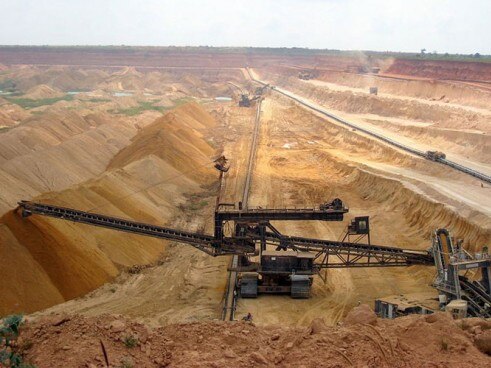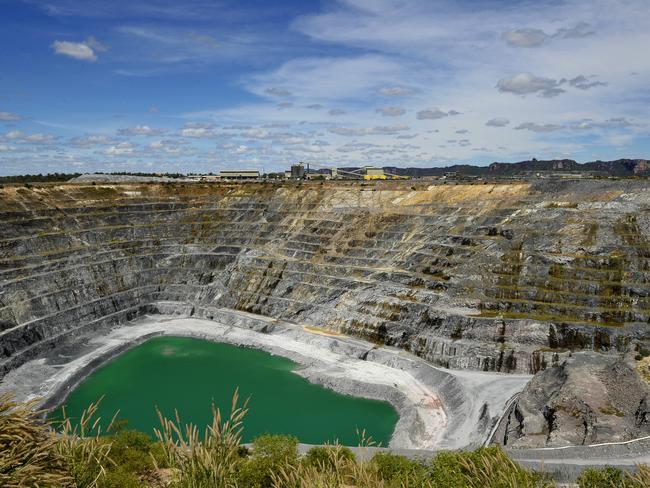600 NT legacy mines to be reviewed in government audit
The Territory government will review legacy mines, some more than 100 years old, to determine risks to public safety and rehabilitation. Read how the audit will be undertaken.
Business
Don't miss out on the headlines from Business. Followed categories will be added to My News.
Hundreds of abandoned Territory mines will be subject to a safety audit.
Darwin-based EcOz Environmental Consultants will audit more than 600 legacy mines throughout the Territory.
The audit contract with EcOz is over three years.
The Territory government has committed $1.4m funding under the Small Mines Safety Program to the audit.
The government will use the audit to develop a works program, with time frames and funding to be confirmed after testing.
A government spokeswoman said risk assessment and prioritisation will take place after each audit is completed.
Previous estimates have put the cost of rehabilitating the Territory’s legacy mine will be in excess of $1bn.

“This will feed into the development of a rolling work program of remediation works coordinated by the Legacy Mines Unit,” the spokeswoman said.
“It is anticipated that packages of remediation works will be issued for the regions as the works are completed.”
She said the Territory had “a significant number” of legacy mines, many of which were mined in the late 1800s to early 1900s using relatively unsophisticated methods, such as hand tools.
The audit will evaluate the extent of earth disturbance around legacy mines and enable an assessment of the necessary level of remediation.
“Legacy mines can range from individual shafts through to complex mine sites,” she said. “Each has unique remediation requirements depending on its location and the potential risk. Remediation activity will also address risk to public safety and is not just to address environmental concerns.”
Areas included in the audit are Pine Creek, Alice Springs, Nonney Well and Frew River, Katherine and regional Darwin.
The spokeswoman said the audit process would involve a desktop review of information that had already been collected with site inspections if further information was required.
The spokeswoman said the audit would include on the ground inspections, risk assessments and remediation recommendations of the nominated small mine sites.
There is no timetable to implement the recommendations that come from the safety audit or what remediation works will take place.

The Territory-wide review follows an earlier review focusing on legacy mines around Tennant Creek, where a $154,164 contract was awarded in 2021 to inspect small legacy mine sites from around the town.
“The purpose of the audit was to undertake inspections and risk assessments of small mine sites in the Tennant Creek area to help inform and prioritise future remediation works,” the spokeswoman said.
“The contract was not required to estimate the remediation cost as the audit information is only one factor the government uses to prioritise sites for remediation.
“The findings of the audit and risks assessment are being used to develop a scope of work. It is anticipated that a tender will be released in 2023 to undertake these works.
“An Aboriginal Areas Protection Authority certificate is required prior to undertaking any remediation works.
“Stakeholder consultation will also be undertaken with impacted land owners.”
The Territory has a number of larger mines under rehabilitation including the Rum Jungle Uranium mine, about 6km from Batchelor, which has been subject to commonwealth and Territory government rehabilitation since 2009.
The commonwealth and Territory governments are exploring options to rehabilitate the Koongarra site in Kakadu, a 12,000 hectare uranium prospect that in 2013 was incorporated into Kakadu National Park and Coronet Hill, which is bordered by Kakadu and Little Mary River.
Currently in the NT, mining operators are now required to remediate disturbances from their mining activities and also pay a security levy in lieu of the payment of costs if the government determines a clean-up is required.
In addition to this, the Mining Management Act requires companies that have provided a security to pay an annual levy equal to 1 per cent of the security into the Mining Remediation Fund, which pays for the costs associated with remediating legacy mine features.





